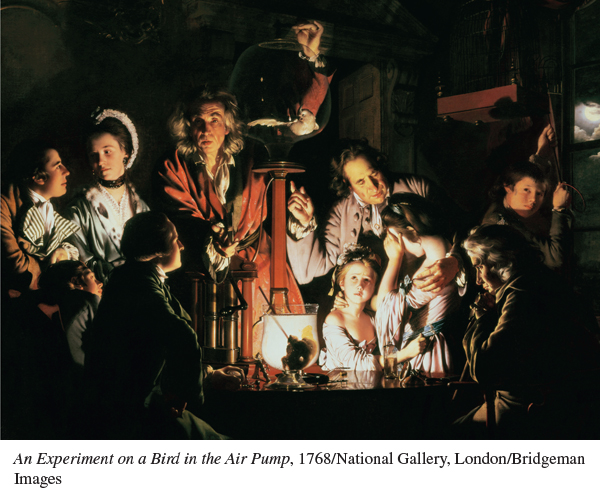A History of Western Society: Printed Page 504
A History of Western Society, Value Edition: Printed Page 487
A History of Western Society, Concise Edition: Printed Page 505
Introduction for Chapter 16
16
Toward a New Worldview
1540–1789
The intellectual developments of the sixteenth and seventeenth centuries created the modern worldview that the West continues to hold — and debate — to this day. In this period, fundamentally new ways of understanding the natural world emerged. Those leading the changes saw themselves as philosophers and referred to their field of study as “natural philosophy.” Whereas medieval scholars looked to authoritative texts like the Bible or the classics, early modern natural philosophers performed experiments and relied on increasingly complex mathematical calculations. The resulting conception of the universe and its laws remained in force until Albert Einstein’s discoveries at the beginning of the twentieth century. Along with new discoveries in botany, zoology, chemistry, and other domains, these developments constituted a fundamental shift in the basic framework for understanding the natural world and the methods for examining it known collectively as the “Scientific Revolution.”
In the eighteenth century philosophers extended the use of reason from the study of nature to human society. They sought to bring the light of reason to bear on the darkness of prejudice, outmoded traditions, and ignorance. Self-

CHAPTER PREVIEW
What revolutionary discoveries were made in the sixteenth and seventeenth centuries, and why did they occur in Europe?
What intellectual and social changes occurred as a result of the Scientific Revolution?
How did the Enlightenment emerge, and what were major currents of Enlightenment thought?
How did Enlightenment thinkers address issues of racial and social difference, and how did new institutions and social practices diffuse Enlightenment thought?
What impact did new ways of thinking have on political developments and monarchical absolutism?
Chronology
| ca. 1540–1700 | Scientific Revolution |
| ca. 1690–1789 | Enlightenment |
| ca. 1700–1800 | Growth of book publishing |
| 1720–1780 | Rococo style in art and decoration |
| 1740–1748 | War of the Austrian Succession |
| 1740–1780 | Reign of the empress Maria Theresa of Austria |
| 1740–1786 | Reign of Frederick the Great of Prussia |
| ca. 1740–1789 | Salons led by Parisian elites |
| 1751–1772 | Philosophes publish Encyclopedia: The Rational Dictionary of the Sciences, the Arts, and the Crafts |
| 1756–1763 | Seven Years’ War |
| 1762–1796 | Reign of Catherine the Great of Russia |
| 1780–1790 | Reign of Joseph II of Austria |
| 1791 | Establishment of the Pale of Settlement |